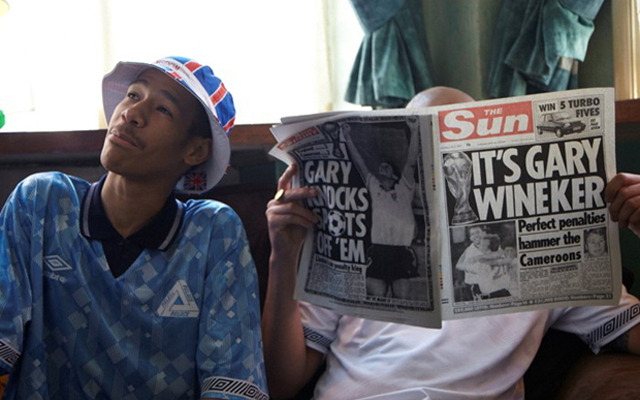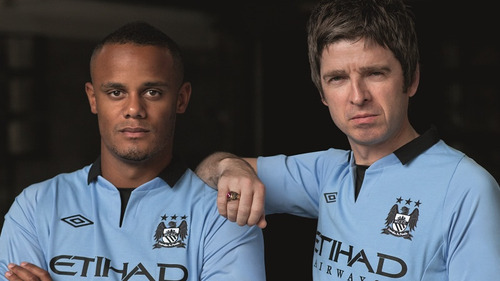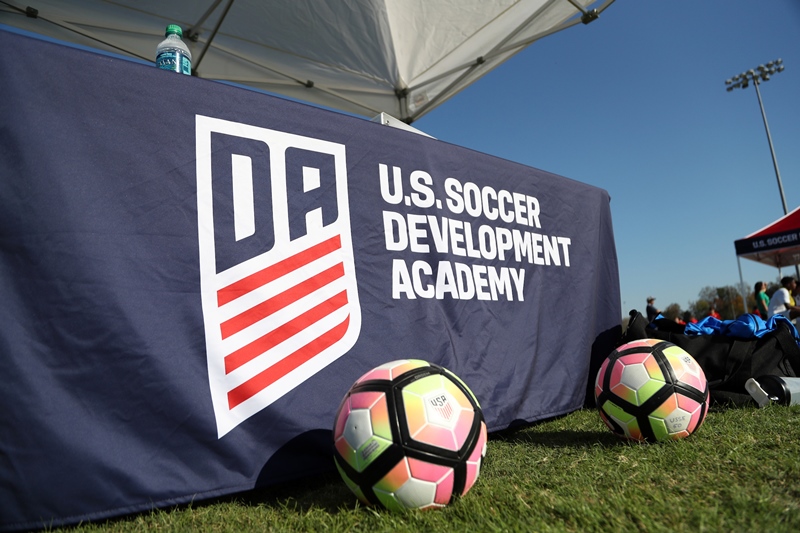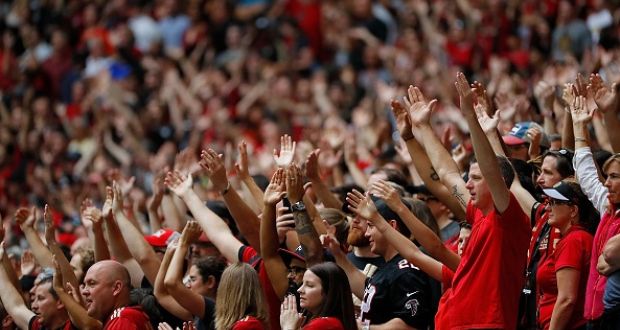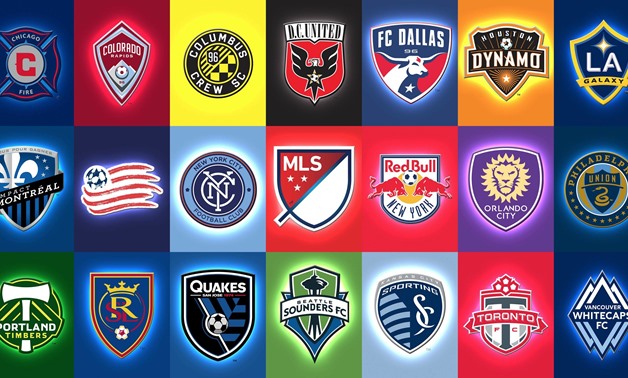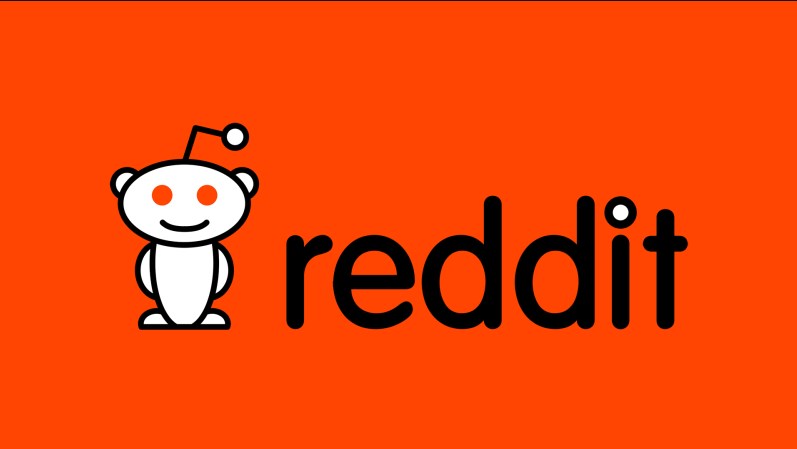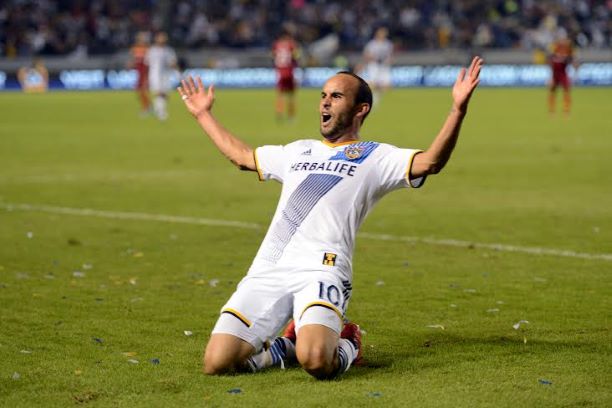The Old Fabric of England
The Old Fabric of England

The Old Fabric of England
As football news goes, the press releases and staged media events on Tuesday afternoon off-days don’t register loudly in the mind of the casual fan. Certainly, in the context of Everton’s season — their new Spanish manager and the attacking verve that has put them on the brink of a Champions League place — the threshold for interest by Toffees is still higher. Even if you were to narrow it to news of aesthetics, the update of the club’s badge and the lackluster response is still likely much bigger news than the announcement that the club has signed with its third kit maker in four years.
For me, though, and surely for some other football fans, Roberto Martinez’ tour of a Manchester kit factory with 11 lucky Evertonians is some of the most exciting off-field news of the year. My joy really has little to do with the club and its new five year deal, but rather the sponsor. After being condemned to irrelevance, Umbro is returning to English football.
Umbro, the Manchester-based apparel company founded in 1924, is probably the last major English team sportwear company standing. It’s also more or less synonymous with English football, as the FA and their national team sported their uniforms for much of their history. Personally, my fascination with the company stems from the end of the last decade, when under its “Tailored by Umbro” slogan, it released a succession of clean, minimalist and frankly gorgeous uniforms drastically different from the template-driven production styles of other major manufacturers. For much of the past five years, those competitors have been trying to copy that trend, to varying degrees of success.
Up until the Everton announcement, however, Umbro appeared to be in the middle of a short, drastic slide to obsolescence. Its largest stable of clubs is now in South America, where it sponsors several leading clubs of CONMEBOL’s second-tier leagues and some of the weaker Brazilian sides. While it still creates some of the continent’s best shirts, Umbro’s design philosophy has never really been well served there; clean design is difficult when many of its teams cram their kits full of ads and the continent’s native manufacturers usually opt for a “more is more” approach. In Europe, its business has largely consisted of using retreads of old kits for Scandinavian, Irish and Turkish teams and has no clubs left in the Football League. Internationally, outside of Ireland, Umbro’s partners aren’t sides that are followed much out of their home countries — you’re forgiven if you haven’t seen its magnificent work recently in Guatemala or Peru.
This might seem pretty remarkable, if only because not more than two or three years ago, Umbro may not have been toe-to-toe with Adidas and Nike in Europe, but was at least solidly in the second tier across the continent. Athletic Bilbao ran rampant over Manchester United in the 2012 Europa League sporting the double diamonds; Lille OSC won the 2011 league and cup double wearing the same. In England, they were very much the third kit supplier – going into Euro 2012 (where they supplied 3 teams), Umbro made unique kits for EPL and Championship mainstays such as Southampton, Nottingham Forrest, Blackburn Rovers, Sunderland, and the jewel in the crown, title holders Manchester City.
So what happened in the interim? In 2007, Umbro began to struggle as England’s chances of qualifying for the Euros slipped, and it was bought out by Nike in a £285 million ($580 million) deal that year. Umbro still operated independently, but its renaissance came while part of the Swoosh’s empire. For the first several years, Nike was willing to let the company operate at arm’s length as a competitor. Indeed, Nike initially saw a thriving Umbro as a complement to its own football brand and gave the FA assurances that the company and its relationship with the Association would be “protected and enhanced” after the sale.
Within a few years, however, simple economics clearly began coloring Nike’s judgment. The clichés about the cutthroat fight between Nike and Adidas have been picked over before, but suffice to say, Nike came to see Umbro less as a complementary company it controlled and more a competitor that it sustained. It began to prepare Umbro for the scrap heap while stripping it for parts first, transferring the contracts of England and City, among others, before selling it to Iconix for $225 million in 2012. Umbro’s reduced stature and funds made it all but impossible to retain other major clubs when contracts ended after the 2012 and 2013 seasons. By the end of the carnage, its role in its home country was all but gone.
The world of sportswear, just like any other business, is filled with such stories: iconic brands that fail to get in front of the global economy and quickly end up in the bargain bins of your local Modells or Sports Direct. Plenty have also been pillaged during the process in a similar fashion. It still seemed strange, however, that England, who so proudly embraces its role as the “birthplace of the game”and all the nostalgia which that entails, would put out to pasture a home-grown firm so intertwined with many of the country’s greatest sporting moments. It’s disappointing that a company on the vanguard of kit design and a major resistor of the template use typical of the modern international game was set to disappear from the scene in part because of those qualities. It seemed assured, until the new Everton contract, that its slide would be swift and irrevocable.
This isn’t meant to be some nativist screed that English football should be made in England (no more than I think the contract for NBA jerseys should be taken from Adidas and directed towards Nike or Under Armour). Nor is it an assault on the neo-liberal arms races that define modern football. It’s just that the game has indeed seemed a little emptier this year. Not just because the league could always use more teams whose shirts split the difference between garish and boring, but because part of what makes the English game The English Game is missing. Umbro’s slogan for one of its last England uniforms was “the new fabric of England” — if there’s more than a grain of truth to that, it’s only because “new” is woefully out of place.
The geometric logo is a classic, but as of last week, it’s as good as new again, and the game is better off for it. We watch football because usually we find it fun, and a large part of that is the vibrancy and diversity of the game. If every game was the same two teams playing the same style to reach the same scoreline, no one would care. It’s a more fun sport to follow when you can watch the Premier League, or League One, or Ligue 1; when you can enjoy flair players and towering center backs; when you can see teams play tiki-taka or hoof-it-and-hope. There may be an outer limit, but there’s more to be a fan of when there are different songs, different announcers, and, yes, different kits. Every squad shouldn’t tear up their contract and beat their way to Umbro’s door, but there’s undoubtedly a place for it. The contribution it makes deserves to be represented in its home market, even if — especially if — that’s one of football’s biggest stages.
This piece was written by Will Baskin-Gerwitz, who you can follow on Twitter @wbgerwitz. Comments below please. Follow AFR on Twitter.

